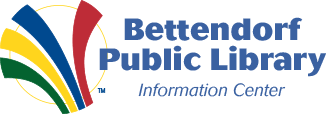Read 5 recommendations from Jared Polis on improving education and the workforce – Chalkbeat

Report on the National Governors Association’s “Let’s Get Ready” Initiative and its Alignment with Sustainable Development Goals
Executive Summary: A Renewed Educational Vision for Sustainable Development
A report from the National Governors Association (NGA), under the 2024-25 chairmanship of Governor Jared Polis, outlines a series of recommendations for state leaders to reform educational systems. The “Let’s Get Ready” initiative advocates for a holistic educational approach that prepares students not only for employment but also for civic life and personal well-being. This vision directly aligns with the United Nations’ Sustainable Development Goals (SDGs), particularly SDG 4 (Quality Education), SDG 8 (Decent Work and Economic Growth), and SDG 16 (Peace, Justice and Strong Institutions). The initiative calls for a fundamental shift in how states measure success, moving beyond traditional academic metrics to encompass a broader set of skills essential for sustainable and equitable societal progress.
Addressing Deficiencies in Educational Frameworks for Sustainable Development
The initiative identifies a critical disconnect between the skills currently prioritized and measured by state education systems and the competencies required for long-term success. The report argues that an exclusive focus on math and reading proficiency is insufficient for preparing students to thrive. This narrow approach impedes progress toward several key SDG targets:
- SDG 4.7: Fails to ensure learners acquire the knowledge and skills needed to promote sustainable development, including global citizenship and a culture of peace.
- SDG 8.6: Contributes to a mismatch between graduate skills and labor market demands, potentially increasing the proportion of youth not in employment, education, or training.
- SDG 16: Overlooks the development of civic engagement skills, which are fundamental to building effective, accountable, and inclusive institutions.
The report, informed by feedback from educators, families, students, and business leaders, posits that states lack effective mechanisms to monitor long-term student success and resilience in the face of social and economic change.
Strategic Recommendations for Aligning State Education Policy with SDGs
The NGA and Governor Polis have issued five key recommendations to guide governors in strengthening educational frameworks in alignment with sustainable development principles.
-
Establish Clear, Holistic Goals
Governors should define comprehensive goals spanning early childhood to career, including short-term and long-term targets for economic participation. States must develop and track strategies to meet these objectives.
- Primary SDGs Addressed: SDG 4 (Quality Education), SDG 8 (Decent Work and Economic Growth)
-
Foster Inter-Agency Collaboration
Governors should dismantle institutional silos and foster communication and coordination between state agencies to improve educational and career outcomes for all residents.
- Primary SDGs Addressed: SDG 16 (Peace, Justice and Strong Institutions), SDG 17 (Partnerships for the Goals)
-
Implement Longitudinal Data Systems
States are encouraged to build robust data systems that track student progress from early childhood through their entry into the workforce, providing a long-term view of educational efficacy.
- Primary SDGs Addressed: SDG 4 (Quality Education), SDG 10 (Reduced Inequalities)
-
Ensure Public Data Transparency
Data collected on educational and career outcomes should be made available to the public in a user-friendly format. This transparency enables researchers and the public to evaluate progress and hold institutions accountable.
- Primary SDGs Addressed: SDG 16 (Peace, Justice and Strong Institutions)
-
Advocate for Strategic Partnerships
State leaders should pursue federal partnerships or create state-level consortiums to enhance student assessment, identify and direct funding toward students most in need, and contribute to national research.
- Primary SDGs Addressed: SDG 17 (Partnerships for the Goals), SDG 10 (Reduced Inequalities)
Analysis of Sustainable Development Goals in the Article
1. Which SDGs are addressed or connected to the issues highlighted in the article?
The article discusses issues that are directly and indirectly connected to several Sustainable Development Goals. The primary focus on overhauling education to better prepare students for their future touches upon goals related to education, economic growth, and institutional strength.
- SDG 4: Quality Education: This is the most central SDG. The article’s main theme is the need to strengthen education systems, move beyond traditional metrics like math and reading, and prepare students for workforce readiness, civic engagement, and personal well-being.
- SDG 8: Decent Work and Economic Growth: The article repeatedly emphasizes preparing students for the workforce and ensuring they have the skills needed to succeed and participate in the economy. The “Let’s Get Ready Initiative” explicitly links education to economic competitiveness and resilience.
- SDG 10: Reduced Inequalities: The recommendation to “identify the students who need the most help and direct funding toward them” directly addresses the goal of reducing inequalities in educational opportunities and outcomes.
- SDG 16: Peace, Justice and Strong Institutions: The article calls for preparing students for “civic life” and “civic engagement.” Furthermore, it recommends improving coordination between state agencies and making data publicly available for accountability, which relates to building effective and transparent institutions.
- SDG 17: Partnerships for the Goals: The article explicitly advocates for creating “federal partnerships” and “state consortiums” to assess student performance and share research. The initiative itself is a partnership involving governors, educators, parents, and business leaders.
2. What specific targets under those SDGs can be identified based on the article’s content?
Based on the recommendations and issues discussed, several specific SDG targets can be identified:
- Target 4.4: “By 2030, substantially increase the number of youth and adults who have relevant skills, including technical and vocational skills, for employment, decent jobs and entrepreneurship.” The article’s core argument is that states have focused too narrowly on math and reading, highlighting a “mismatch between the skills states are tracking and the preparation students need to succeed once they leave school.” The initiative aims to fix this by focusing on “workforce readiness.”
- Target 4.7: “By 2030, ensure that all learners acquire the knowledge and skills needed to promote sustainable development, including… global citizenship…” The call to expand education to prepare students for “civic life and personal well-being” aligns directly with the goal of fostering global citizenship and well-rounded individuals.
- Target 8.6: “By 2020, substantially reduce the proportion of youth not in employment, education or training.” The initiative’s goal of tracking students “from early childhood to the workforce” is a mechanism to monitor and ultimately reduce the number of young people who are disengaged from both education and the economy.
- Target 10.3: “Ensure equal opportunity and reduce inequalities of outcome…” The recommendation to “identify the students who need the most help and direct funding toward them” is a direct strategy to ensure more equitable outcomes in education.
- Target 16.6: “Develop effective, accountable and transparent institutions at all levels.” The recommendations for state agencies to “communicate and coordinate” better and to “display the data they’ve collected for public consumption” are actions aimed at creating more effective and transparent governance in the education sector.
- Target 17.17: “Encourage and promote effective public, public-private and civil society partnerships…” The initiative itself, which gathered feedback from “educators, parents and families, students, researchers, and community and business leaders,” exemplifies a multi-stakeholder partnership. The call for “state consortiums” further reinforces this target.
3. Are there any indicators mentioned or implied in the article that can be used to measure progress towards the identified targets?
The article mentions and implies several indicators that could be used to track progress:
- Longitudinal Data Systems: The third recommendation is to build “longitudinal data systems, that tracks the progress of students from early childhood to the workforce.” This system would serve as the primary tool for generating data for multiple indicators, such as post-graduation employment rates, career outcomes, and participation in further education.
- Public Data Dashboards: The fourth recommendation to “display the data they’ve collected for public consumption in a user-friendly format” implies the creation of public-facing indicators. This allows the public and researchers to “evaluate progress” on goals related to workforce readiness, civic engagement, and well-being.
- Metrics Beyond Math and Reading: The article critiques the over-reliance on “math and reading proficiency” and calls for measuring a broader set of skills. This implies the development of new indicators to measure “workforce readiness, civic engagement, and well-being.”
- Tracking of At-Risk Students: The recommendation to “identify the students who need the most help” implies an indicator related to the proportion of at-risk students who receive targeted support and the impact of that support on their outcomes.
- Formation of Partnerships: The number of “federal partnerships” or “state consortiums” created, as recommended in the fifth point, can serve as a direct indicator of progress towards SDG 17.
4. Summary of SDGs, Targets, and Indicators
| SDGs | Targets | Indicators |
|---|---|---|
| SDG 4: Quality Education | 4.4: Increase the number of youth and adults with relevant skills for employment.
4.7: Ensure learners acquire knowledge for global citizenship and well-being. |
– Development of new metrics for “workforce readiness” beyond traditional test scores. – Data from longitudinal systems tracking career outcomes. – Inclusion of “civic engagement” and “personal well-being” in educational assessments. |
| SDG 8: Decent Work and Economic Growth | 8.6: Reduce the proportion of youth not in employment, education or training (NEET). | – Data from longitudinal systems tracking the proportion of students who successfully transition to the workforce or higher education. |
| SDG 10: Reduced Inequalities | 10.3: Ensure equal opportunity and reduce inequalities of outcome. | – Proportion of students identified as needing help who receive directed funding and support. – Disaggregated data showing progress for different student groups. |
| SDG 16: Peace, Justice and Strong Institutions | 16.6: Develop effective, accountable and transparent institutions. | – Establishment of publicly accessible data dashboards on educational outcomes. – Evidence of improved communication and coordination between state agencies. |
| SDG 17: Partnerships for the Goals | 17.17: Encourage and promote effective public, public-private and civil society partnerships. | – Number of federal partnerships and state consortiums created to assess performance and share research. |
Source: chalkbeat.org

What is Your Reaction?
 Like
0
Like
0
 Dislike
0
Dislike
0
 Love
0
Love
0
 Funny
0
Funny
0
 Angry
0
Angry
0
 Sad
0
Sad
0
 Wow
0
Wow
0












































































